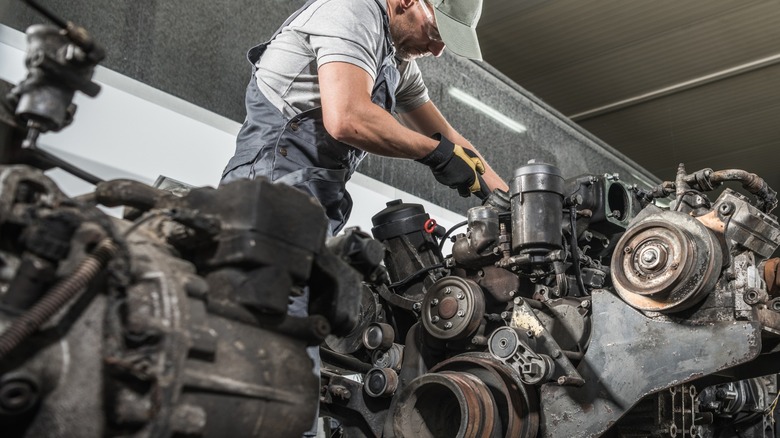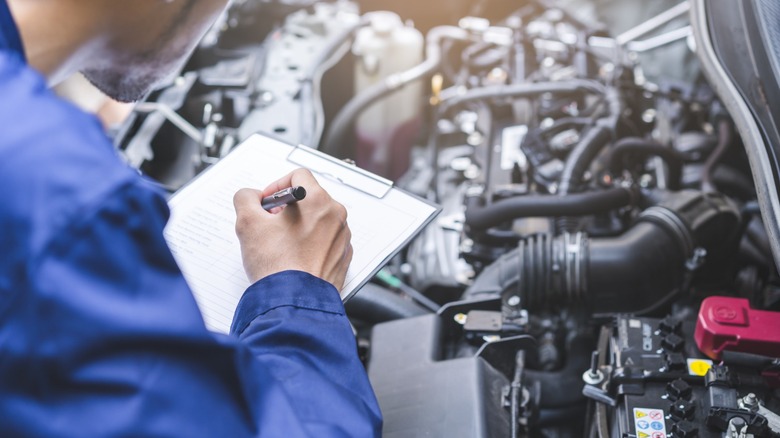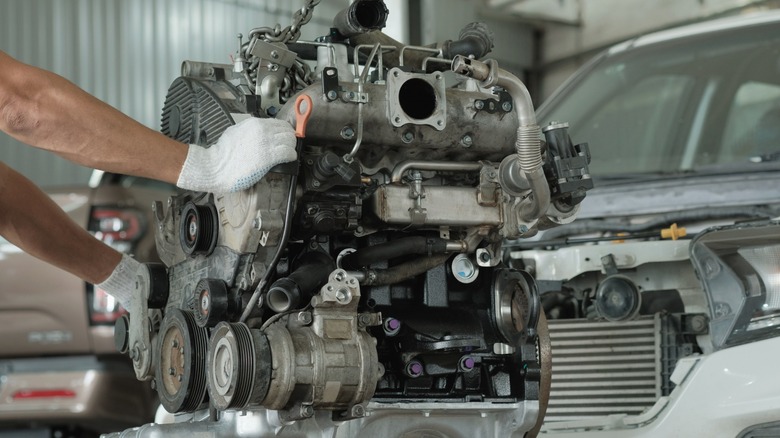Engine Rebuild Vs Overhaul: How They're Different (And Why It Matters)
Your old, reliable engine has been coughing up some strange, but concerning noises. So, you call your mechanic to find out what the problem and solution are to restoring its harmonious hum. But the mechanic starts tossing around words such as an engine rebuild and overhaul. And, you always thought they meant the same thing, but not quite. An engine rebuild and overhaul are closely related. However, they can mean and signal very different things. Get them mixed up, and you might find yourself biting off more than you can chew.
The goal of an engine overhaul and a rebuild is, like any repair, to restore it to good, working conditions. The difference between them is so salient, with potentially huge ramifications. An engine overhaul involves stripping down specific parts of an engine for targeted repairs. A rebuild, on the other hand, involves the same process but with the aim of near‑new performance. With that foundation laid, here's the difference between an engine overhaul and an engine rebuild, as well as why it matters.
An overhaul is a spa day for your engine
Mechanics and auto shops use the phrases engine overhaul and engine rebuild interchangeably. So, it is your job to clarify what type of service you're getting. Think of an engine overhaul like a spa day for your engine. The mechanic will first disassemble the engine. Then its worn-out components will be serviced or replaced. The overhaul targets specific parts to fix immediate problems, but only temporarily.
Overhauls range from a quick top overhaul to a more intensive full overhaul. A top overhaul is performed when the problematic components are easy to reach. That way, there is no need for the whole engine to be removed and taken apart. Meanwhile, a full overhaul signals a more difficult problem to solve. It could also be that the components are harder to reach. The mechanic will often need to remove the entire engine, exerting more time and labor in the process. When your exhaust smoke is white or black, it could be a signal that it's time for an engine overhaul. Other signs include misfiring, frequent overheating, or even excessive engine oil consumption.
When the overhaul is not enough, then it might be time for a rebuild
An engine rebuild is as intensive as it sounds. It is reserved for deep-rooted problems. The goal is to restore the engine to minty fresh conditions. The mechanic will strip down the entire engine. Each part gets refurbished or replaced. Think block, crank, rods, pistons, heads, and everything else. This is why an engine rebuild can earn a new maintenance record. The FAA clarifies that a true rebuild lets the owner acquire a new maintenance record. This is possible without previous operating history, if done by an authorized technician.
It's the kind of reset that can matter for resale value or compliance in regulated industries. That is why it is more time and cost-intensive. It is also why an engine rebuild might not be the best DIY project to take on. Especially as there are many common mistakes people make when rebuilding engines. So, if you're tired of frequent visits to the repair shop. Or, if you're looking to resell your car that has a troublesome engine. Then, a rebuild offers a better option than an overhaul.


